8. We Are Not Angels (1992)
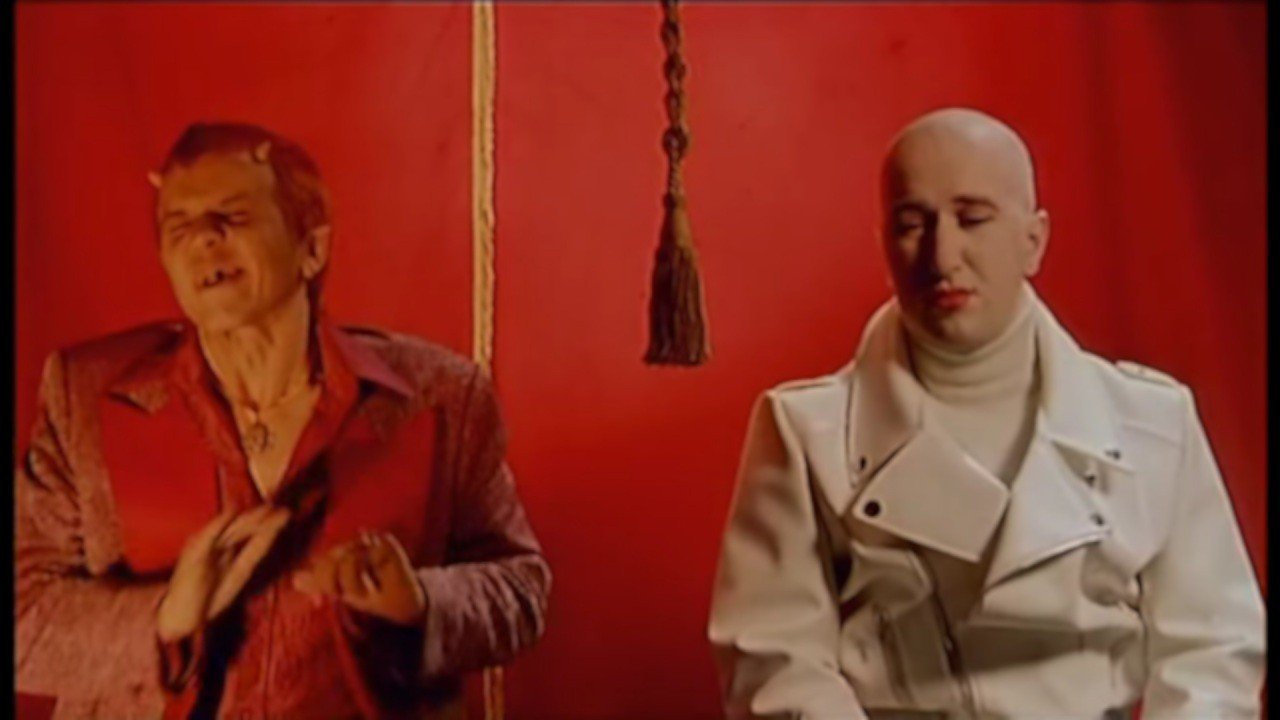
Yet another movie which has absolutely no war in it is called “We are not Angels”. It is a debut made by the young Srđan Dragojević, who, after this movie, made several very good movies that marked the decade. The traces of his inexperience at the time can be seen by the way actors perform, and the plot, which is inconsistent. Nevertheless, “We are not Angels” is a gateway to the powerful imagination of Dragojević, which he expanded further in “The Wounds” and “Pretty Village, Pretty Flame”.
“We are not Angels” is set at the turn of the decade in Belgrade, and it follows young womanizer Nikola (Nikola Kojo), who manages to impregnate a naive and geeky teenage girl during an intoxicated one night stand.
Marina, the geeky girl, summons her friend Buba to help her win over Nikola, and the rest of the film follows their intentions to do so. The main thing that makes this movie stand out from the sea of similar teenage dramas is the introduction of a higher force – an Angel and a Devil, portrayed by Uros Djuric and Srdjan Todorovic.
Srđan Dragojevic seems to have a great insight on what makes the average Serbian go completely nuts over a movie. His directing techniques are a blend of artistic shots such as those of Kusturica and those of Slobodan Šijan, which capture moments of simple dialogue and turn it into a classic. Furthermore, the characters are eccentric and full of lines which are, it seems, written only with a purpose to become remembered. This intention of his was indeed successful.
7. Black Cat, White Cat (1998)
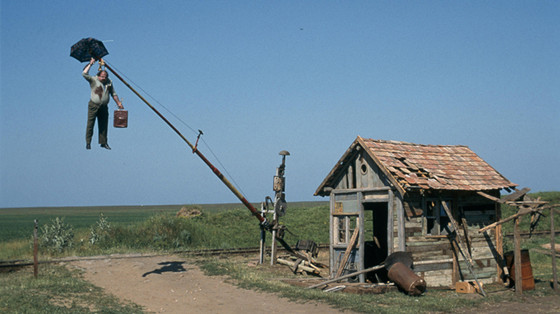
When speaking about Serbian culture, there is one ethnic minority that has become so intermingled with it that many people around the world believe that it is, in fact, Serbian culture – Roma people.
Kusturica, being aware of this fact, made a movie about the life and culture of Roma people called “Time of the Gypsies”. However, it does not belong on this list as it’s a movie from 1988. Instead, his other masterpiece, which is a little lighter than its predecessor, also features a mostly Roma cast and it is called “Black Cat, White Cat”.
The story is about the way the gypsies live in a small village on the Danube. The plot follows an unsuccessful business attempt of Matko, which results in a forced marriage between his son Zare and the sister of a gangster to whom Matko owes money. Anyone who knows Roma people knows that they would do anything for love, and so this arranged marriage is doomed to fail.
Apart from the main storyline, there are many side stories about minor characters (who are often interconnected with the main plot). Some of these stories includes Zare’s love story with a local girl named Ida. Another one is that of the friendship between two elderly people named Grga Pitic and Zarije Destanov, both grandfathers to the couple in the arranged marriage.
Apart from the people, animals and gunpowder play important roles in this as in every other movie from Kusturica. Geese can be seen in the most of the scenes, and are sometimes used very effectively. On the other hand, hand grenades, pistols, rifles, and music are there to make this comedy a dynamic and entertaining representation of Roma people, which is full of ups and downs.
6. Dudes/Thunderbirds (2001)
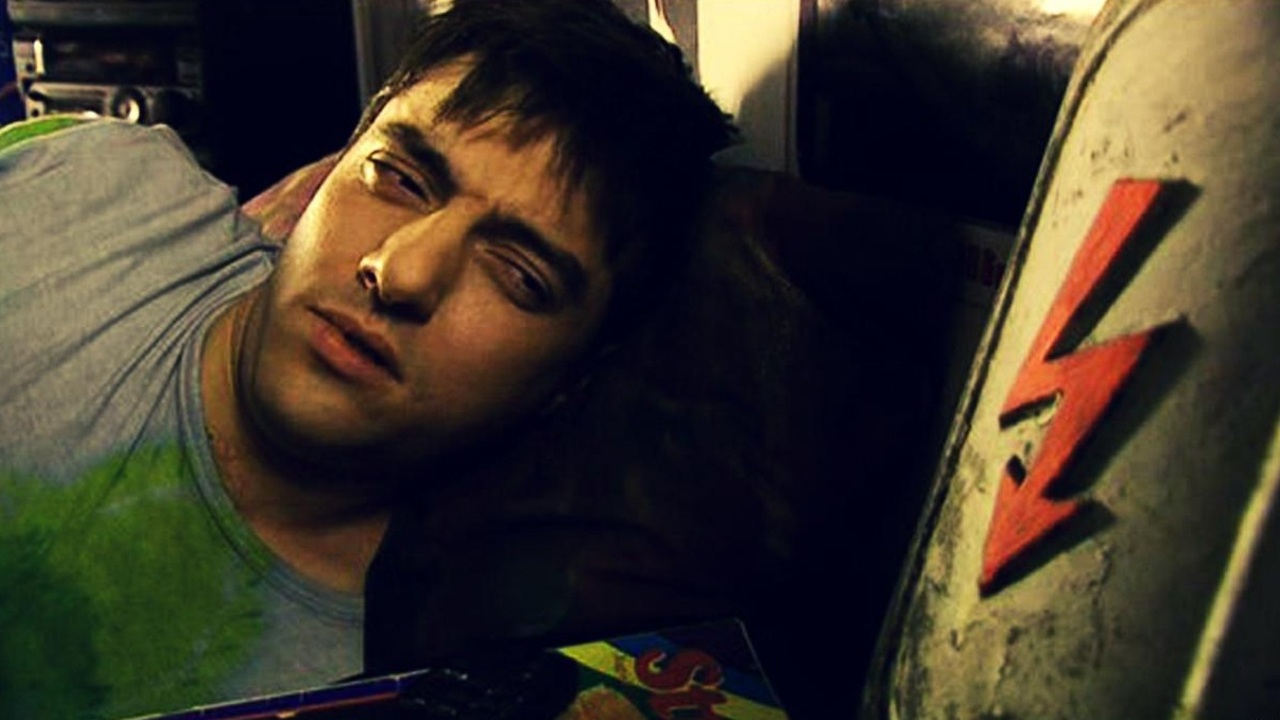
As soon as the bombing of Serbia ended in 1999 and significant political changes took place, “Munje” (“Dudes”) came out as a movie, which sums up the urban culture of the young generation that had to live their best years through war and poverty. Despite this fact, “Munje” is essentially a comedy full of young actors who portray young people and their desires to create, hang out, party, and find love.
One of the two movies by Radivoje Andric, which will become a cornerstone for a contemporary young people’s perception of the world in Serbia, follows two drum and bass artists, Pop and Mare, on their quest to get their demo published. They start by stealing a car and trying to find their childhood friend, who they bullied as kids but who is now a ruthless businessman who owns a nightclub.
On their way there, they come upon various weird people – a policeman who smokes dope, a Santa who burgles a pharmacy. They are all having a good time driving around in a stolen car, but the environment shown around them is nowhere as perfect – it is full of violence, drug addicts, and political parties.
“Dudes” made a huge influence on the people who were born in the 80s and the 90s. The movie was filled with alternative culture, and it managed to influence and inspire many young people to explore themselves in that way and to listen to different types of music, not just the one that was the main (and pretty bad) influence up until then – Serbian turbo-folk.
Apart from that, lines from this movie are still uttered today in everyday situations, and many characters, such as the businessman named Goyko Sisa (Goyko the Tit), are remembered and gladly impersonated by the people of Serbia.
5. When I Grow Up, I’ll Be A Kangaroo (2004)
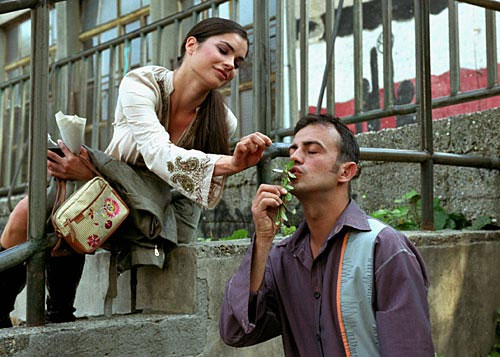
The next movie by Radivoje Andric has an almost completely identical cast as “Dudes”. The setting is also the same – Belgrade at the beginning of the 21st century. One thing is different, though. Instead of focusing on culture, the main focus here is sports.
Unlike “Dudes”, it also has several different plotlines, each of them connected to the other. However, there is a main plotline that connects all the others and that is the one about Kangaroo – a guy who played for the local football club but was bought to play for Eastwich, an imaginary Premier league team.
The events of the movie take place during the match between Eastwich and Manchester United, and all of the characters in the movie follow the result while either betting, chilling on the top of a building, going on a date with a model, or driving a taxi cab. If you take out the violence, you get a standard Guy Ritchie type of story.
All the hopes and dreams of the characters, both young and old, are put in the young and ambitious Kangaroo. This is yet another perspective of viewing youth after the 2000s – most of them failed to achieve something in life, but are eager to support someone who has certain achievements. From the overall boredom to the low-life smuggling of blood pressure measurement devices, the characters in this movie are diverse, interesting, and lovable.
There are so many lines in this movie remembered by young people nowadays that it is currently considered the most quoted film in Serbian cinema. The artistic values of both “Dudes” and “Kangaroo” are, on the other hand, not too great in terms of directing or editing. The performances and script, on the other hand, are going to be remembered for many years to come.
4. The Professional (2003)
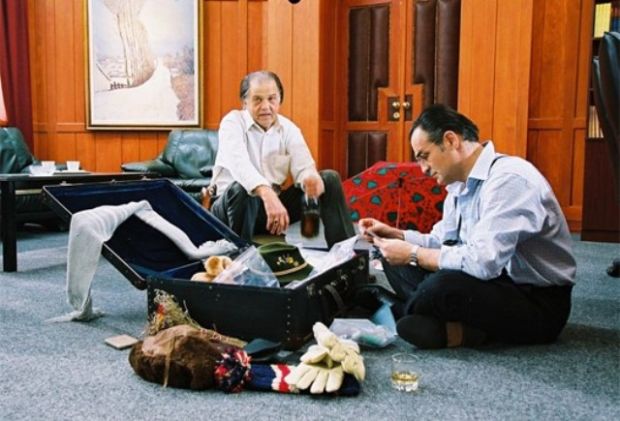
Dušan Kovačević wrote some of the cinema classics in Yugoslavia, including the aforementioned “The Marathon Family”, “Who’s Singin’ Over There?”, and “The Balkan Spy”. All of these movies were made by mostly Serbian crews, but are not on this list due to the period limit for this list. On the other hand, “The Professional” is both directed and written by Dušan Kovačević and although it’s not his best work, it is still regarded as a highly influential movie with great performances.
The story is actually adapted from a play that Kovačević wrote and it has only two major characters – Teodor Teja Kraj, a pro-democratic revolutionary who advocated for the downfall of Milošević, and Luka Laban, a retired policeman who secretly followed every step of Teja during the Milošević regime.
One day, Luka Laban enters the office of Teja, who is now the CEO of a company. He slowly starts explaining who he was and how he significantly affected Teja’s life. The movie then becomes a series of flashbacks in which Luka secretly followed Teja through each event, most of which are closely connected to Teja’s efforts to gather young people and bring about Milošević’s downfall.
The movie became a classic shortly after its release. The script is filled with innovative swear words, which are a trademark of Kovačević’s writing style. Apart from that, the emotional bond between two people who were supporters of contrasting regimes shows the futility of political change in the country, as well as the dreary and rapid political changes in this country.
3. The Wounds (1998)
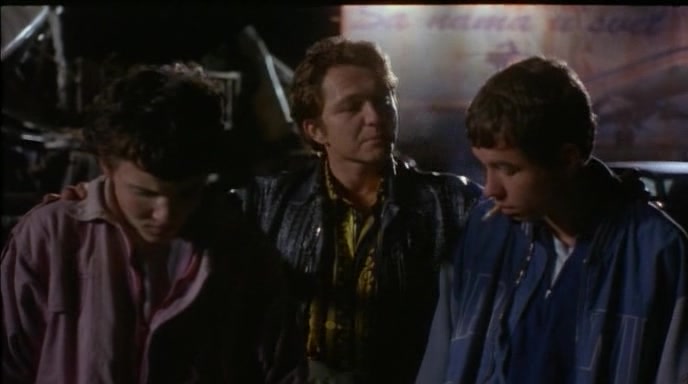
The third movie by Srđan Dragojević is an homage of a sort to the gangster movies of America. In order to understand this movie, one must be able to understand how criminals suddenly sprung up in the 90s. Serbia, being war-torn and economically unstable, was fertile ground for young and ambitious criminals to do as they wished. Being aware of this problem, Dragojević made a masterpiece of a sort, which is still regarded as a great gangster movie.
Pinky and Svaba are two 14-year-old kids from a low-life Belgrade neighborhood. Due to the rise of inflation in the country, they see that the only way they can achieve something in life is through crime.
Local gangsters are their heroes, and starting with petty crime, the two of them see the beginnings of their empire. Narrated by Pinky, audiences will take a look into a typical Serbian 90’s bad boy who wants to live fast and die young. Just as every other gangster movie, this one also has elements such as women as trophies, fast cars, a lot of drugs, egotistical maniacs, and guns everywhere.
The impact of this movie, which was released during one such period, was immense. It pointed out the truth that no one dared say because of their fear of people such as the ones in the movie. The truth was that many young people are taking wrong steps and have false idols, resulting in their early death and the deaths of many other innocent people.
2. Pretty Village, Pretty Flame (1996)
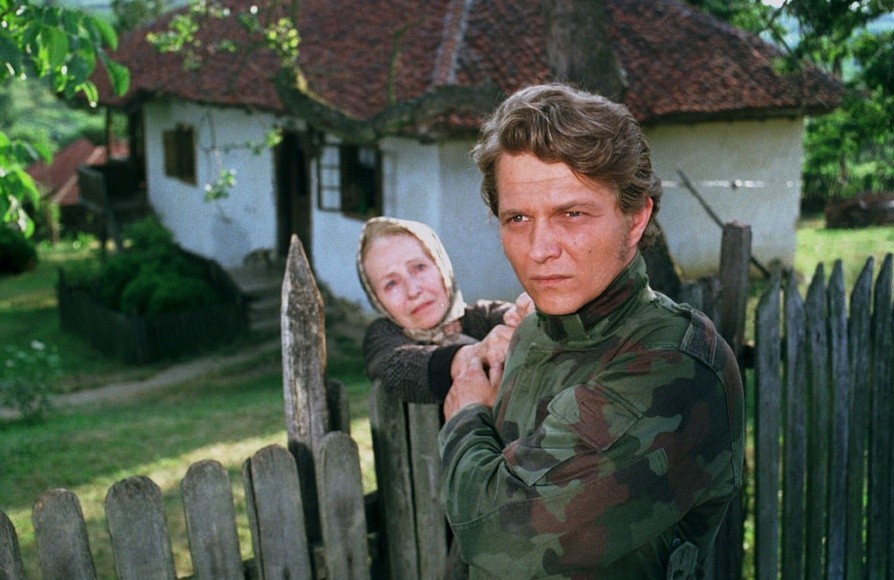
The second movie by Dragojević is regarded as the best war movie of Serbian cinema. Just as every other great war classic, it pinpoints the absurdity of war. The movie came out literally during the war in Bosnia itself and it was misinterpreted by a great number of people as a pro-war film that calls for the killing of Muslims and Croats in Bosnia.
The protagonist of the story, Milan, is followed through several different periods of his life. The first period is his childhood, in which a slow decay of Yugoslavia is shown through a series of events such as the death of Tito. The second one is his youth and his adventures with his best friend Halil, a Muslim who lived in the same village in Bosnia as Milan. The third period, which takes up the most of the movie, is the war itself.
Milan, with a group of Serbian soldiers escaping from a battlefield, ends up in a tunnel that was never finished. The tunnel gets occupied by Muslims (among which is Milan’s friend Halil), and the protagonist and his group struggle to defend themselves with no place to escape. The fourth story follows Milan in a hospital in Belgrade after the war, severely wounded and traumatized by war.
The movie itself is subliminally poetic. It seems like a harsh war movie filled with dirty jokes and ruthless soldiers, while on a whole, it is an homage to one surreal period of Serbian history that is the war in which best friends turn against each other.
1. Underground (1995)
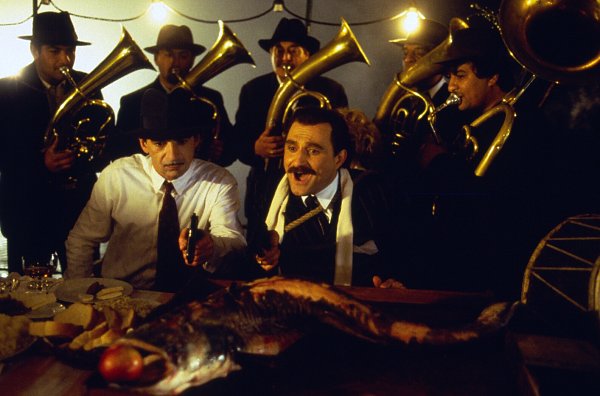
The best Serbian movie, as well as probably the best movie of all time from Kusturica, is definitely “Underground” (“Podzemlje”). Another reason why it is considered as such is due to the fact that Dušan Kovačević wrote a story for it. Here, we have the finest Serbian scriptwriter and director working together and creating something that is both artistically beautiful and so encoded nowadays in Serbian culture that it has become a part of the Serbian identity.
A man who sells weapons on the black market convinces his workers, who work in the basement of his house, that World War II is still not over and that weapons manufacturing still must go on. The plot than takes place on two levels. The upper level follows Marko, the black market seller, and his success in communist Yugoslavia. He is a war hero and movies are made about him.
The lower level follows the people living in ignorance and how they celebrate, copulate, love and hate each other, and build weapons, believing that they do it for a greater good. The problem arises when they break out, and believing that it is still war, create somewhat surreal situations that only Kusturica can so masterfully direct.
The movie is full of surrealistic scenes and almost each of them has Trubači, a typical Balkan brass band, in the background. The scenes are usually filled with people celebrating, drinking, fighting, and talking. Of course, animals are present everywhere and play an important role in the movie – especially one monkey.
To sum it up, this list is far from complete, and it was a very tough decision to make one such list. There are movies that either have great artistic value but not a great cultural impact, and vice versa. Some of the movies worth mentioning here are “Nož” (“The Knife”), “Lajanje na Zvezde” (“Barking at the Stars”), “Bure Baruta” (“Cabaret Balkan”), “Stršljen” (“The Hornet”), and “Tri palme za dve bitange i ribicu” (“Three Palms for Two Punks and a Babe”).
Author Bio: Mihajlo is a MA student of English language and literature and a freelance writer. Although writing is his profession, movies are his passion, and combining the two is his favourite hobby.